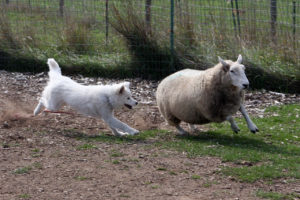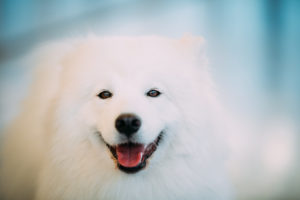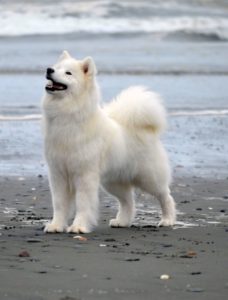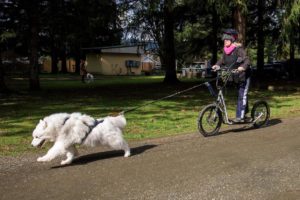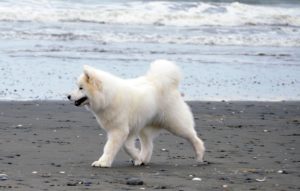Search And Rescue
SAR Dog Fact Sheet
When someone is reported lost or overdue, volunteer search and rescue (SAR) dog teams are available to respond, day or night.
SAR dogs help to locate:
– Children lost in the wilderness, parks or hidden in shrubbery around houses
– Elderly persons and/or alzheimers patients who may have wondered away from homes or hospitals
– Hikers and hunters lost in the woods
– Victims of avalanche. earthquakes, floods, explosions and/or bombs, fires, aircraft crashes, tornadoes as well as other disasters
– Evidence of crime and the bodies of homicide victims
Volunteer SAR dog units search under the direction of law enforcement and the emergency services agencies at no cost to the agency. Units will not respond to request by private individuals and will not respond to known criminals that may present a threat to dog or handler. through the Air Force Rescue Coordination Center at Scott Air Force Base, dog teams may be flown to distance search sites by military or Civil Air patrol aircraft. This to is free to the agency.
How do SAR dogs work ?
All humans, dead or alive, constantly emit microscopic particles bearing human scent. Millions of these are airborne and are carried by the wind for considerable distances. The air scenting SAR dog is trained to locate the scent of any human in a specific search area. The dog is not restricted to the missing person’s track and can search long after the track is obliterated. Many air scenting search dogs are also trained in tracking or trailing and scent discrimination. on arrival at the search site, dog handlers work directly for their unit’s operations leader or the search operations leader, who reports to the search boss, or incident commander (IC). many units provide their own base camp operation, with trained radio operators, SAR dog advisors and other support personnel. After the initial hasty searches of trails and paths, each dog/handler team is usually assigned a segment of the search area to cover systematically. Handlers work their dogs downwind of the section assigned to them or cover the area in a way that provides dogs with the best scenting coverage. Handlers map the area they have covered and report their probability of detection (POD) to the plans section or Operations leader on completing their assignments. Search dogs can work in area where other searchers have been, and they can work with other search resources such as man trackers. Using scent articles, they can, if trained, discriminate for the missing person in heavy populated areas. They can work day or night in most kinds of weather, and are especially effective where human sight is most limited- on the dark, in dense woods or heavy brush, in debris or under water.
What are the requirements for SAR dogs and their handlers ?
SAR dog handlers must enjoy working with dogs and being in the out-of-doors in all kinds of weather. they must be physically fit and able to respond to emergencies. They must become proficient in land navigation, map and compass, radio communications, wilderness survival and first aid. Requirements for the SAR dog include trainability, agility, endurance and the ability to get along with other dogs and people. A search dog is a valued member of his handler’s family and he regards people as his friend. SAR dogs used are usually the larger working and sporting breeds of dogs. German Shepherds, Dobermans, Rottweilers, Golden Retrievers, Giant Schnauzers, Labradors as well as mixed breeds are found on various SAR unit rosters. Most handlers prefer to begin with a young puppy; however, an older dog may be suitable if the dog has already developed a good working relationship with his owner. Dogs trained for police service, protection, security, Schutzhund and the like can be used in SAR work as long as they are trained not to bite except on command and are non-aggressive during searches. There is no place in lost person search for an overly aggressive dog. It normally takes at least a year of training- at least twice a week- before a dog/handler team is mission ready (operational). All units evaluate a candidate team’s search proficiency before fielding them on actual searches. (This excerpted from a paper by Marian Hardy, East Coast SAR Dog Confederation)
Q: Do these dogs require a piece of clothing to find someone ?
A: Airscent search dogs are trained to detect the presence of any human scent so they do not require a scent article. They are known as non-scent-discriminating
Q: Do these dogs use a long leash like bloodhounds do?
A: No, they are allowed to work off lead and stay in the general vicinity of the handler. once they locate a human scent, they will go to the source of the scent and either perform a bark alert to bring the handler in or return to the handler and lead him/ her back to the victim, depending on how the particular dog is trained
Q: What type of training does the handler need to have?
A: The handler must be trained in short term survival, land navigation, orienteering, at least basic first aid, radio procedures and incident site procedures as well as being able to “read” and care for his/her dog. In K-9 Alert, we encourage our members to obtain their Amateur Radio Operators License as this is a valuable resource during training, at actual searches, as well as while in transit.
Q: Are dog handlers required to have their Amateur Radio (HAM) license ?
A: While not a requirement by our unit yet, handlers are encouraged to study for and obtain their ‘HAM ticket’. Even though all teams carry a State Frequency Radio by which they may communicate with base, a HAM radio permits individual teams to communicate back and forth at will with no interruption to base. They are also very nice while in transit to and from searches as they permit all team members to keep in constant contact over a state wide area by use of area repeaters. While cellular phones would aid in this task it would be more costly and many areas where searches take place do not have ‘cell’ phone coverage
Q: How would I get a dog team from K-9 Alert if I needed it ?
A: K-9 Alert can be alerted through the Virginia Emergency Operations Center in Richmond, Virginia. We respond only to request by local or state authorities. If you have an emergency, contact the Virginia State police or your local police/sheriff department
Q: Do these dogs work at night ?
A: Yes, they work quite well at night, possibly better. The air currents are usually more favorable at night, the temperature is usually better for the dogs and, since they use their noses not their eyes, they can search effectively when other visual resources are hampered
Q: When can they work ?
A: The dogs can work anytime, day or night, rain or shine, but prefer not to work during the heat of mid-day because the scent often rises straight up and is very difficult to detect and because the dogs work better in cooler temperatures. Only conditions dangerous to the dog or handler would prevent them from working
Q: How long can they work ?
A: The dog teams usually work 4-6 hour tasks with a couple hours of rest in between, but can work longer hours if the urgency demands it. The temperature and the handler and dog’s endurance can affect how long they work
Q: Do other people in the area affect them ?
A: Other people who have been in the area and have left will have little effect on the dog’s effectiveness (e.g. Previous search teams), but since the dogs detect any human scent, they will find anyone who is currently in the area. The dog is merely rewarded and sent off to find anyone else who’s in the area. We prefer to have the area to ourselves, but its not uncommon to have other people around, especially during disaster work
Q: Can these dogs work “in water” ?
A: In a manner of speaking, yes. From a boat they do locate underwater bodies. A submerged body constantly gives off oils and gases that float to the surface. The dog can detect them and will locate where they are surfacing. With a little knowledge of the water currents, the approximate location of the body can be determined and divers can be utilized to locate the body
Q: What kind of dogs can be used for SAR ?
A: Any breed of dog can be used but the sporting or working class dogs are most commonly used due to their stamina. The dog must be well socialized, friendly and obedient.



